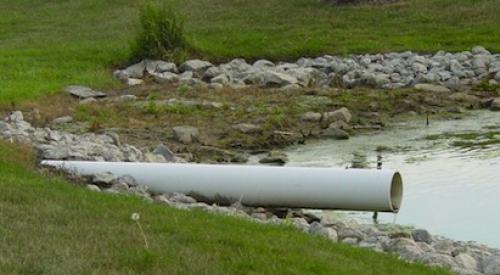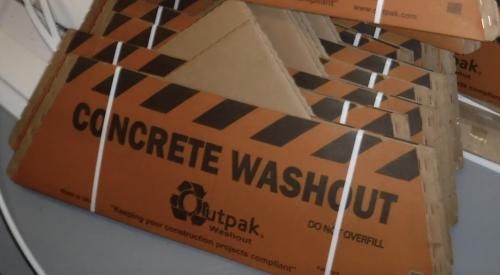|
While the Clean Water Act celebrated its 30th birthday this fall, parts of the country weren't feeling much like celebrating — those in the Gulf regions were dealing with storm water devastation.
The magnitude of what happened in Louisiana and Mississippi this summer is clearly not an every day occurrence; however, it does serve as a reminder to builders to ensure they are compliant with storm water pollution regulations.
A big year for waterIn May 2004, Thomas Skinner, the Environmental Protection Agency's (EPA) acting Assistant Administrator for the Office of Enforcement and Compliance Assurance said recent settlement activity had kicked off a campaign to increase compliance with storm water runoff regulations. "Runoff from construction sites is a primary contributor to the impairment of water quality in the nation," said Skinner.
Recent hurricanes and heavy rainfall in many regions just exacerbate the problem for developers and builders, whose responsibility it is to control pollutants in construction runoff.
Nowhere to run from the storm
 |
The EPA estimates the majority of the construction industry doesn't meet Clean Water Act standards. It's reasonable to expect that the EPA's recent enforcement activities show what's in store for Giants this upcoming year. Recent high-profile cases have shown the negative impact that violations can have on profitability.
Why storm water pollution is such a big dealThe EPA's concerns about storm water pollution are not unfounded. Sediment from jobsites poses a serious threat to the quality of U.S. water. Runoff — water flowing over the ground — becomes polluted as it flows over jobsites with loose excavated and graded soil, not to mention concrete, paint, and other harmful substances. "Unlike OSHA violations, Clean Water Act violations are crimes against the communities, and are handled by the Department of Justice. That's because all of us use our nation's waterways," says Richard Burton, director of the NESH Institute, a national training organization that provides educational resources in the fields of environmental safety and health training.
Managing the risk
 |
To manage the risk of fines and other penalties, Giants hire outside consultants who specialize in the SWPPP process. These consultants offer services that include SWPPP development, monitoring, analysis, sampling, training and field inspections. Giants should know consultants are not responsible for compliance.
"The biggest mistake management makes when they hire an outside vendor as a consultant," says Burton, "is that they think this subcontractor is responsible for making sure the SWPPP is implemented correctly on the jobsite. They're wrong."
Burton adds, "The parties the EPA refers to as the 'operators' — in the case of Giants, the developer and the builder — are both legally liable, and are therefore responsible for complying with the requirements of the permit, no matter how many SWPPP subcontractors they hire. In certain cases, the person who signs the SWPPP, which is a legally-binding contract document, can go to prison."
Fines from the EPA have recently gone up to $37,500 per day per occurrence + $10 per gallon of contaminated storm water discharged. "If the jobsite has two overflowing dumpsters, that violation adds up to at least $75,000 in fines per day," says Burton.
To avoid fines, builders must ensure their consultants, employees and other key team members are properly trained in compliance. Builders hire new construction personnel on a regular basis. No matter how large the builder is, construction, and therefore compliance, happens one site at a time. It's time for Giants to demonstrate companywide SWPPP training.
How can builders make sure their construction team members and other key personnel know how to establish and maintain compliant jobsites? Giants can reduce the number of non-compliant jobsites by training their project managers and site superintendents on compliance inspections, maintenance and recordkeeping.
Training your key people on every jobsite
 |
It's critical that construction employees thoroughly understand how and when to conduct quality control inspections and what to do when the inspector from the local water authority visits the site.
The EPA provides information, and individual states and localities have many resources available to train the key employees of developers and builders. Several independent agencies and non-profit organizations exist for the sole purpose of training developers and builders and helping them to steer clear of compliance woes. See below for a list of organizations.
On any jobsite, project managers and site superintendents must know how to:
- Make sure the permit application covering storm water pollution is posted at the site entrance
- Keep detailed maintenance records
- Perform the required weekly, biweekly, monthly, and after-rain inspections, and document them to show that the site is in compliance.
 |
| For more information... | ||
| The following organizations provide helpful information on training employees to be compliant with the Clean Water Act: | ||
| The U.S. Environmental Protection Agency: http://www.epa.gov | The International Erosion Control Association: http://www.ieca.org | The National Association of Home Builders: http://www.nahb.org |
| BuildIQ: www.buildiq.com | ||
|












